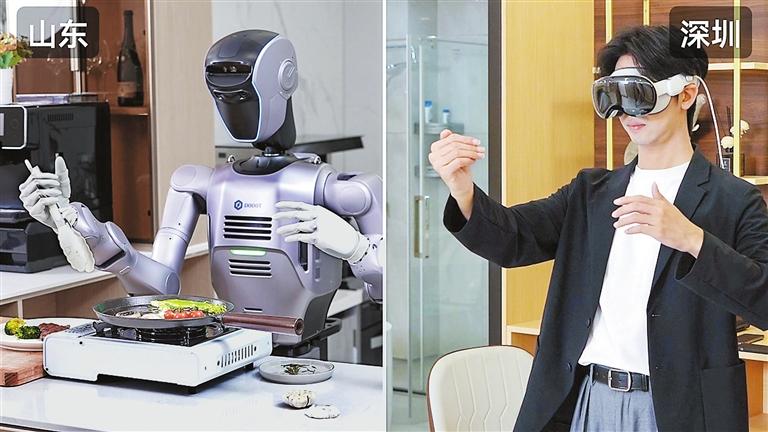
IN a futuristic display, an engineer stationed in Shenzhen used a remote-controlled robot to fry a steak 1,800 kilometers away in a home in eastern China’s Shandong Province. This scene, part of a demonstration by Shenzhen-based Dobot Robotics, showcased the company’s latest breakthrough in humanoid robot remote control technology. In the four-minute video published on the company’s WeChat on July 4, the robot was seen tracking the engineer’s hand gestures, mimicking his movements as he wore the VR headset. Under remote control, Atom performed tasks such as dabbing the steak with a paper towel, pouring oil, flipping the meat, and even sprinkling salt with its fingers, replicating human dexterity. Every movement of the engineer was captured by a millimeter-level precision motion capture system and transmitted via ultra-low latency networks, enabling real-time mapping onto the robot. When the engineer used the robot to serve the fried steak to a child, the core value of this technology was revealed — it has the potential to break down spatial barriers through the deep integration of telexistence and telepresence. Dobot released the Atom model in March at the cost of around US$27,500 a piece. Dobot celebrated the release of Atom with a similar culinary-themed video showing the robot preparing a nutritious breakfast. The humanoid robot has 28 degrees of freedom and is equipped with five-fingered hands that enable it to perform tasks such as preparing breakfast (placing toast, lettuce, and fruit) and pouring milk. It is also reportedly capable of walking with a human-like gait. At present, only the upper body is controllable via VR, while walking remains autonomous or limited. Dobot is set to revolutionize multiple sectors by promoting the use of humanoid robots in a variety of areas, including hospitals, disaster relief, family homes, industrial manufacturing, education, and entertainment. In the medical field, doctors will be able to remotely control robots to perform surgeries. In disaster relief situations, robots can be used to remotely carry out critical tasks in hazardous environments, such as nuclear radiation zones and fire scenes. In family settings, remote-controlled robots could provide assistance to children living away from home, help take care of seniors, or prepare meals for children. Moreover, this technology is poised to transform other industries. In manufacturing, workers will be able to remotely control robots to repair equipment overseas. In education, teachers can use robots to conduct remote hands-on teaching. Even the entertainment sector could see a shift, with gamers controlling real-world robots for competitive play, bringing virtual gaming into the physical realm. (SD News) | 
